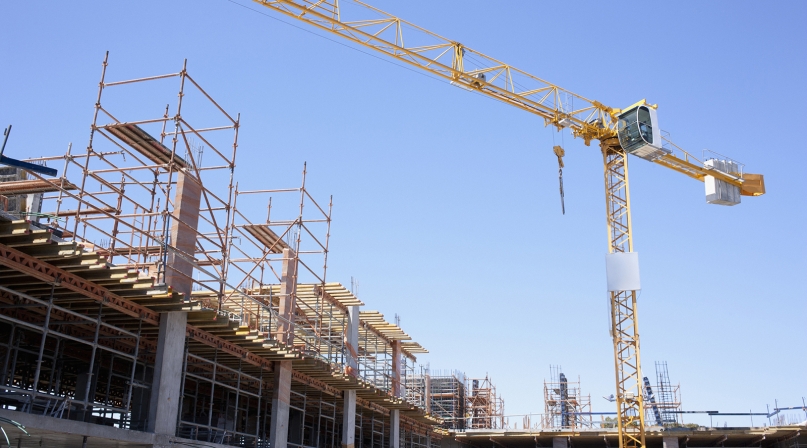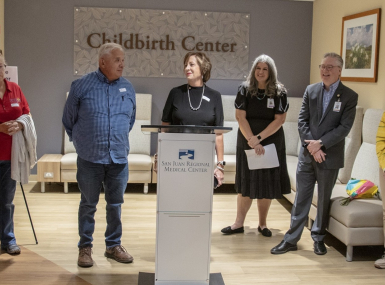If You Build It, Will They Come?

As I’ve facilitated strategic planning sessions with elected leaders and staff for the last 15 years, I’ve observed that they respond to their communities’ challenges and opportunities differently, depending on their values and resources. Here are six strategic community and economic development planning approaches taken:
1) Wait until they come, then build.
With this approach, land owners or developers approach the county or city with a plan and then the elected leaders and staff follow their lead in designing undeveloped areas and pursuing economic development.
Developers are usually more organized and better-funded. To make more profit, they persuade elected officials and staff to change zoning ordinances and policies to increase housing density. Some communities are so desperate for growth that they agree to developers’ conditions without considering the long-term consequences.
For better or for worse, the future of the city or county is defined mostly by others, who may or may not have the community’s long-term best interests at heart.
2) If you build it, they will come.
In this approach, community leaders and staff design the development, create the infrastructure — the roads, streets, and transportation corridors — and build a website presentation showing what they can do for potential businesses and future residents. Then they wait — hoping for the right developers, businesses and residents to come to them.
In the movie Field of Dreams, Kevin Costner plays a novice Iowa corn farmer who hears a whispering voice say, “If you build it, they will come.” He later envisions a baseball diamond on his farm and builds it. He eventually reunites with his estranged father and a host of baseball greats. His dream changes his life, relationships and community.
Leaders who dream big then build can be successful. But sometimes they risk too much and don’t consider the details — their dream becomes a fantasy. Recently I drove a Southwest interstate and saw an impressive modern mall with its own exit. Unfortunately, it had no tenants and customers. Both the investors and community had wasted many resources on a lemon.
Sometimes communities overestimate demand and have significant shortfalls in tenants and consumers. Ultimately, there is not enough tax revenue to pay for the infrastructure, leaving taxpayers to bail out the project, or worse, leaving the county or city unable to pay the investors’ bonds, and lowering their bond rating.
3) Assess before you build — build — and then they will come.
In this approach, leaders and staff take more calculated risks. They do their homework to assess what the citizens’ and future residents’ demand might be for certain housing areas and businesses, then build based on that data. This increases the chances that the kinds of businesses and residents they want will come.
For example, before you design and build, you could do a study of your residents’ buying behavior (psychographics), then analyze how many rooftops you may have to drive demand. You could also estimate demographic growth to forecast the amount, age and culture of the population.
One kind of homework missed is considering the competition. Oftentimes, your competition is neighboring communities. You need to factor in if a neighboring community plans to attract big box retailers. Unfortunately, these businesses play one community against the other so they can get a tax break. Knowing and selling your community’s strengths will help you negotiate your best future.
Today your community’s businesses compete with online retailers and companies from other states and globally. Significantly, the 75 million millennials, aged 20 to 36, shop online more than previous generations — their buying power rivals baby boomers’. Communities that focus too much on brick-and-mortar development — with malls, other businesses, and professional office space — risk not having enough tenants or tenants who go out of business.
Even mixed-use development, with its combination of residential, commercial and industrial buildings can be risky, if comprehensive collection and analysis of the data has not been completed. This can create great risk with sales tax revenue forecasts. One mixed use development in Utah that used both taxpayer and private funds, that did not factor in the strength of a future competitor, lost over 50 percent of their taxable sales in just two years when many of their anchor tenants relocated to the other mall.
A word to the wise: given the amount, size, and buying behavior of the millennial generation, you should heavily weight their buying behaviors into your forecasting.
4) Assess, build and then persuade them to come to us.
With this approach, after carefully measuring demand, community leaders and staff design and build, then bring the right businesses into the community. Then they attract the kinds of residents those businesses hope to employ. They hire or outsource economic development experts to target the kinds of companies (and residents) they want.
Research shows that one of the best ways to attract great businesses is to market the skills of the people in your community. “Access to skilled labor is the #1 drawing factor in a company’s location decision, according to Area Development Magazine. When you factor in the rise of the sharing economy and the cross-industry shift toward services, people are [y]our strongest asset.”
Your role is twofold:
1) Persuade businesses to see benefits of your current workforce. In this case it’s not just getting found on Google, it’s also about closing the deal. You need the right kind of people proactively e-mailing, calling, texting, meeting and lunching with potential businesses. Use contact management software like Salesforce to organize the process and selling skills to persuade the customers about the features, advantages and benefits of your local workforce.
2) Attract more skilled labor to your community. You can do this by marketing the following quality of life assets:
- Your community’s strengths
- The depth and breadth of educational opportunities
- The availability and flexibility of housing
- Transportation options, and
- Sense of community — in a study by Community Builders, 83 percent of people prefer to live in their ideal community with a lower salary.
5) Please come, but support our quality of life.
Some communities’ vision is to preserve their quality of life and to invite newcomers to do so too. Many rural communities resist becoming suburbanized or urbanized. Park City, a world-famous ski resort community in Utah, home of Robert Redford’s Sundance Film Festival has an effective vision: Keep Park City, Park City.
They proactively keep their unique culture, with its balance of residential, business, open space, historic preservation, year-round resort, main street and the arts.
Many communities use strategic planning to preserve their charm and promote their brand.
6) It’s OK to come, but don’t stay too long. We like things the way they are.
Years ago, I saw a bumper sticker on a farmer’s truck that said, Welcome to Idaho, now please go home!
It was in the heart of potato country. I think he was saying, “please buy your French fries at McDonald’s but don’t come and fish my favorite hole and develop our land.”
Some communities don’t want to attract tourists, businesses and residents.
They raise crops and families and then their children (their highest quality “exports”) take the strong work ethic and country values they have learned to start careers in bigger communities.
Nevertheless, many small communities I consult with conduct strategic planning to figure out ways to keep their children from moving away, probably so they can spend more time with their grandchildren!
Whatever your challenges and opportunities, it’s important to know which of these six strategies you follow and whether or not you should be going in a different direction. Sometimes you may simply just need to update your strategic plan. Taking a calculated risk to build your dreams could not only get businesses and residents to come, but also help you keep the American dream alive in your community, home town or county seat.
Attachments
Related News

Now I know I can adapt my communication style
San Juan County, N.M. Commissioner Terri Fortner spent her career working with people one-on-one, but she overcame hangups about online communication when the pandemic forced her onto video calls when she first took office.

County service meets a veteran’s need for purpose in Spotsylvania County, Virginia
After Drew Mullins transitioned from a high-performance lifestyle in the military, he found the environment and purpose he sought when he took office in his county.
Now I know that solid waste is complicated
Custer County, Idaho Commissioner Will Naillon says solid waste removal is "one of the things that people often take for granted until it’s their job to make sure it happens... that’s the story of being a county commissioner."
